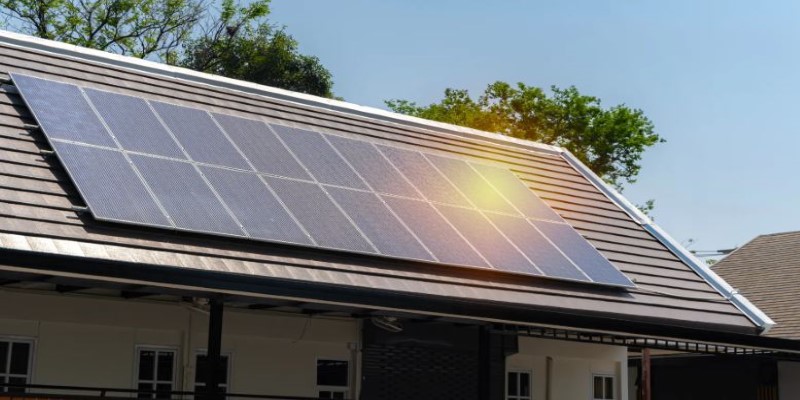The idea of tapping into sunlight to power our lives sounds almost poetic. For centuries, humans have relied on fire, wind, and water. But in recent decades, solar energy has stepped onto the stage as a modern-day solution to some of our biggest environmental problems.
When you see solar panels dotting rooftops or sprawling across empty fields, it’s easy to think of them as clean, silent soldiers fighting the war against fossil fuels. Still, a fair question remains—is solar energy truly renewable? And if so, what makes it sustainable in the long run? Let's dive into the details.
The Core Concept: What Makes Energy Renewable?
Renewable energy is sourced from materials that renew themselves naturally over short time frames, such as wind, water, and sunlight. They contrast dramatically with non-renewable sources, like coal, oil, and natural gas, which take millions of years to create and are used up when consumed. Solar energy, as a result, is fueled by the sun—a star predicted to glow for another 5 billion years or thereabouts. That sheer timescale in itself puts it squarely in the "renewable" category.
Unlike fuels that must be extracted, refined, and burned, solar power relies on capturing sunlight using photovoltaic cells (those shiny panels you often see). These cells convert sunlight directly into electricity. As long as the sun continues to rise every day, there is always more energy to capture. That's the essence of its renewability.
Technology Behind Solar Power and Its Lifespan
Solar energy relies mainly on two technologies: photovoltaic (PV) systems and concentrated solar power (CSP). PV systems are most frequently used in homes and offices, directly converting sunlight into an electrical current. CSP, however, uses mirrors or lenses to focus a large area of sunlight onto a small area, producing heat used to generate electricity—more commonly employed in large-scale installations.

Now, even though sunlight is limitless, the technology used to capture it isn’t. Solar panels typically last about 25 to 30 years before their efficiency drops noticeably. This doesn’t mean they stop working entirely, but their ability to produce electricity tapers off. Also, making solar panels involves mining rare minerals like silicon, silver, and indium. This manufacturing process uses energy and leaves a carbon footprint.
However, when you compare the total energy a panel produces during its life to the energy it takes to build, install, and eventually recycle it, the balance overwhelmingly favors solar. Most panels offset their manufacturing energy within one to four years. After that, everything they produce is clean gain. So, even if the components aren’t renewable in a strict sense, the energy output is.
Environmental and Economic Benefits of Solar Energy
Solar energy doesn't emit harmful gases when generating power. That fact alone has made it a central player in the global effort to slow climate change. By replacing coal or natural gas plants with solar farms, we can significantly reduce carbon dioxide emissions and other pollutants. Additionally, no water is required during operation, unlike some traditional power stations that use substantial amounts of water for cooling.
Beyond the environmental argument, there's an economic one. The cost of solar panels has dropped over 80% in the past decade, making them more accessible than ever. Homeowners, businesses, and even entire cities are seeing long-term savings after the initial investment. And because sunlight is free, there is no risk of price spikes like those seen with fossil fuels. Maintenance costs are also low, and once the system is up and running, it can produce power reliably for decades.
This energy independence appeals to both individuals and countries alike. Developing regions can benefit enormously from decentralized solar systems, bringing electricity to remote places without the need for expensive grid infrastructure. In this way, solar power supports both environmental and human progress.
Limitations and the Future Outlook of Solar Energy
Despite its strengths, solar energy isn't perfect. One major limitation is its intermittency—it only works when the sun is shining. That means solar systems are less effective at night or on cloudy days. To combat this, energy storage solutions such as lithium-ion batteries are being developed and improved; however, they remain expensive and environmentally demanding to produce.

Moreover, solar power generation can be land-intensive at scale. Large solar farms require a significant amount of space, which can sometimes lead to land-use conflicts or ecosystem disruption. However, innovation continues in areas like floating solar farms and integrating solar tech into buildings (like solar windows or shingles), which reduce the need for extra land.
The good news is that solar technology is evolving fast. Researchers are working on more efficient materials, better storage options, and smarter grids to manage supply and demand. For instance, perovskite-based solar cells promise higher efficiencies at lower costs and may one day complement or even replace traditional silicon cells. Community solar programs are also growing, allowing people who can’t install panels themselves to benefit by buying a share in a local solar project.
All these developments hint at a future where solar isn’t just a renewable option—it’s the dominant one. But we’re not there yet. It will take political will, investment, and public understanding to fully transition to a solar-powered world. Still, the pieces are starting to fall into place, and the sun isn’t going anywhere anytime soon.
Conclusion
So, is solar energy renewable? Yes—undeniably so. The sun delivers more energy to Earth in an hour than the entire planet uses in a year. That staggering fact alone speaks volumes about its potential. While the tools we use to harvest that energy require resources and carry their challenges, the energy itself remains clean, endless, and replenishing. Solar power isn't just a buzzword in environmental circles; it's a practical, scalable solution that's already reshaping how we think about energy. As our technology matures and our understanding deepens, solar is likely to become not just an alternative but a new standard. In the long game of sustainable power, it's the steady heat of the sun that may light our future.












